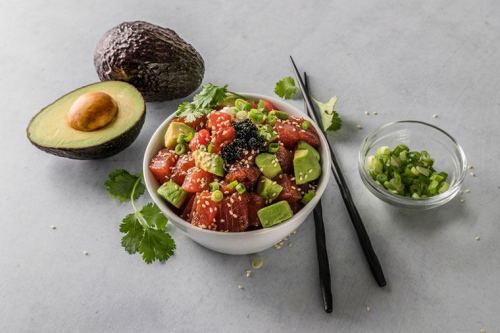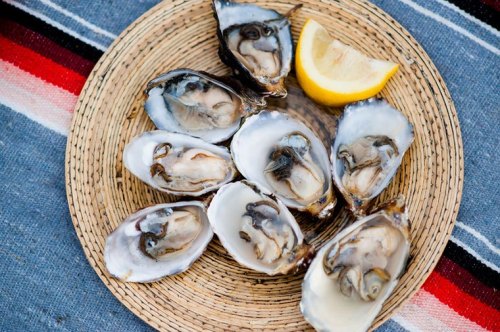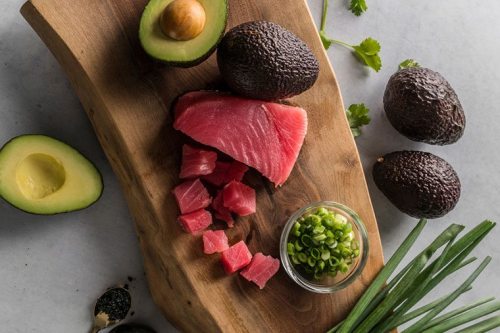When doctors told Kristin Canty her four-year-old son was “allergic to the world,” she didn’t know what to do. Grass, trees, and dust all sent him into terrible coughing fits, ending in wheezing and tears.
No medicine worked. No amount of vacuuming did, either. “His doctor told me he’d be like a bubble boy, unable to live a normal life or do anything,” Canty recalls. She spent a lot of time Googling, desperate for a solution, which is how she stumbled across data linking raw milk proteins to allergy relief. (Totally at odds with dairy’s bad rap, right?)
Canty stopped all the drugs, instead giving her son several glasses of the farm-sourced beverage every day. Within weeks, all of his allergy problems were gone. Now, he’s a completely healthy college student—who still drinks raw milk.
“The whole idea is to eat the way our ancestors ate, as if you’re gathering it yourself.”
The revelation inspired Canty to adopt a so-called “primal” diet, whereby she shops directly from farmers to ensure her family’s food is completely chemical-free and unpasteurized. “The whole idea is to eat the way our ancestors ate, as if you’re gathering it yourself,” explains Canty, the founder of primal restaurant Woods Hill Table in Concord, Massachusetts. If it brings to mind the Paleo philosophy, there are, indeed, similarities—no processed foods; grass-fed meats and wild-caught fish only; heavy on the healthy oils—but in the primal world, provenance is even more important.
Right now, primal eating is still on the fringe. It doesn’t have the same celebrity endorsements as, say, the 80/20 or macrobiotic diets, but it’s rising in popularity as more people seek out food without processed or artificial ingredients. Nutrition pros are into it because it’s a balanced way of eating, despite its restrictions. “I’m a fan of any diet involving whole foods, quality protein, healthy fats, complex carbs, and [nutrient-dense] vegetables and fruit,” says Nutritious Life founder Keri Glassman, RD.
As if that weren’t enough, going primal forces you to be mindful about every meal, which often gets lost in our grab-and-go food culture. “Many people just don’t think about what they’re putting into their bodies,” Canty says. “I’ve seen firsthand the difference it can make.” And you don’t even have to give up avocado toast to get there.
Here’s everything you need to know about the primal diet.

Primal pantry staples
One of the the biggest differences between the primal and Paleo diets is their POV on grains. In the primal lifestyle, they’re allowed—but must be soaked or sprouted for greater nutrient density. The same goes for nuts.
Healthy fats are another key aspect of the primal way, particularly when it comes to cooking. “Ghee, grass-fed butter, olive oil, coconut oil, and safflower oil are all staples in my house,” Canty says. Not only do these particular fats help our brains and bodies thrive, but there’s nothing artificial hiding in them—unlike chemical-filled cooking sprays.
If you were to take a peek in Canty’s freezer, you’d find lots of grass-fed meat and wild fish. Oysters, clams, prosciutto, cured meats, and burgers are all big parts of primal eating. Since every primal meal is protein-based, Canty varies the sources to get a variety of nutrients and flavor profiles, while still ensuring everything’s sourced locally.
Let’s not forget all the raw dairy. (Another Paleo no-no that’s okay in primal circles.)
As for the fridge, low-sugar veggies and fruit fill the crisper, while kombucha, sauerkraut, and kimchi also take up a hefty amount of real estate. “Their digestive enzymes are an important part of the diet,” Canty says.
Oh, and let’s not forget all the raw dairy. (Another Paleo no-no that’s okay in primal circles.) This is definitely the most controversial part of the diet, but Glassman says it really comes down to personal preference. “If you choose to consume it, make sure you’re doing so from a high quality source,” she advises.
Here’s the thing, though: Bypassing the government and going straight to the farm isn’t always easy, since raw milk isn’t legal in all 50 states. (The feds’ argument is that pasteurization kills harmful bacteria, like E. coli—a legit concern.) Still, Canty stands by raw dairy as the magic bullet that healed her son, especially now that more studies are saying processed milk isn’t as good for the immune system as the fresh-from-the-cow stuff. (She’s so passionate about it that she even made a documentary, Farmageddon, in hopes of reducing government interference in the farmer-consumer relationship.)
The restaurateur offers up this advice when it comes to seeking out raw dairy: “You can use the Weston Price Foundation directory to find a chapter leader in your area who can help you find raw milk near you. I highly recommend visiting the farm, talking to the farmer, and making sure you trust the practices.” But remember, no watchdogs are involved in this type of farm to table eating, so the food safety checks are on you as the consumer.

What’s a typical primal meal look like?
Okay, so you’re off to a good start with a fully-stocked kitchen. But now you have to, you know, make yourself something to eat. “A typical breakfast for my family is scrambled eggs with crabmeat cooked in raw butter, seasoned with garlic [and topped] with avocado and sauerkraut,” Canty says. Add in a glass of fermented juice, and it hits most of the major primal food groups: animal protein, fat, raw dairy, and gut-healthy probiotics.
Oysters, poké, and burgers are all pretty common lunches and dinners chez Canty, often served alongside a beet salad or roasted veggies. None of it is all that unusual on the surface. It’s only when you consider the farm-fresh sourcing that a primal meal really stands apart.

What about eating primal at a restaurant?
When it comes to eating out, Canty admits that sticking to the diet can be challenging. It’s partially why she decided to open her own restaurant. There, you’ll find a fully primal menu, with everything sourced nearby and kombucha on tap.
But if you can’t make it to Concord, Canty advises picking an oyster or ceviche restaurant. “There’s a surplus of them now, which has made eating out a little easier,” she says. Another place she’s seeing more primal-friendly food: airports. “I keep seeing more raw jerky and seeds from artisanal companies. It’s great!” she says.
Even so, sticking to a primal eating plan is challenging, which is what Glassman considers its biggest downfall. “In general, primal eating is healthy but can be difficult to follow,” she says. But for Canty, the benefits are worth it. “It feels good to be healthy and I’m eating to keep my body this way,” she says. “Plus, all this food is delicious! I don’t feel like I’m depriving myself at all.” Pass the kimchi burger, please!
Here’s how to read a kombucha label, which will come in handy if you’re stocking up on fermented drinks. Plus, some expert tips on cleaning out your pantry, no matter your nutritional M.O.
Sign Up for Our Daily Newsletter
Get all the latest in wellness, trends, food, fitness, beauty, and more delivered right to your inbox.
Got it, you've been added to our email list.











